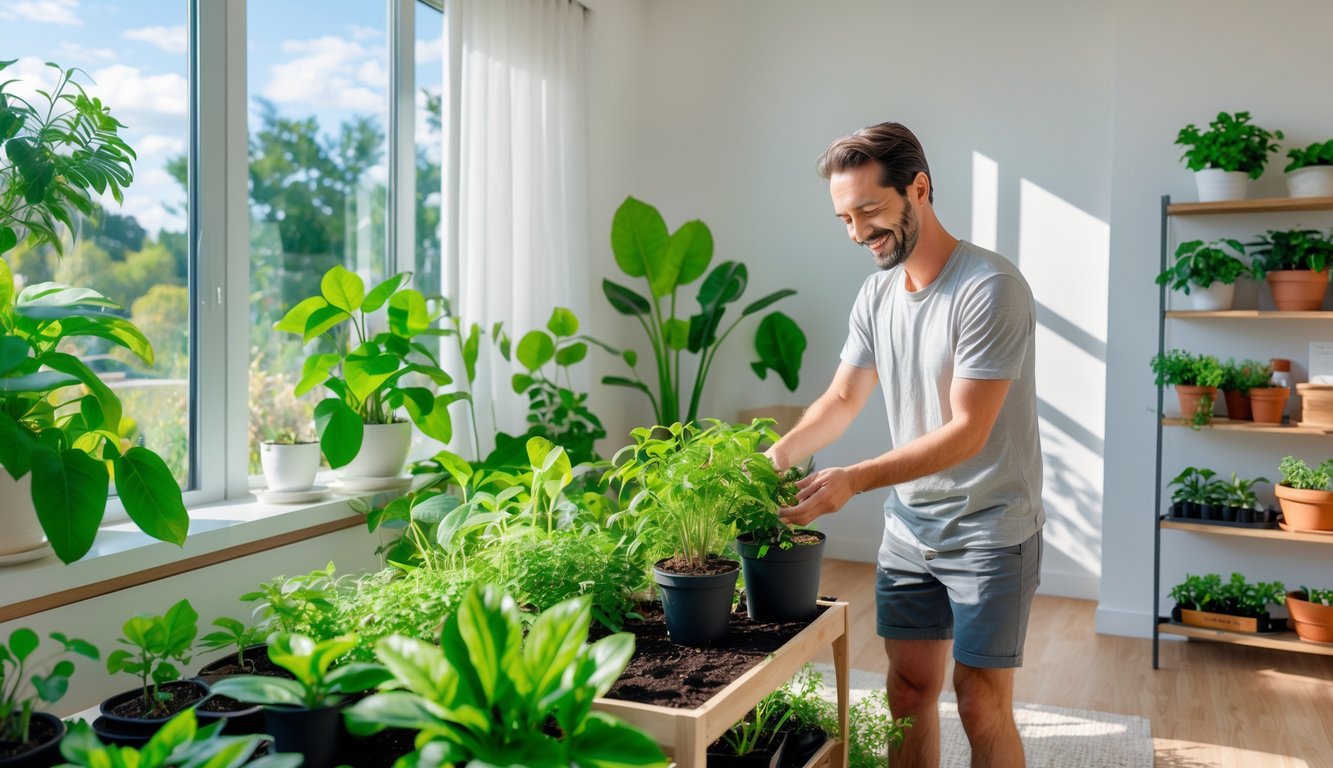
Smart Home Technology Integration
Honestly, I trip over cords and still can’t figure out why most people ignore the best part—hooking up houseplants to the rest of their smart home gear. It never works as smoothly as the ads claim, but I’ve set up enough of these for friends to know: letting automation take over those “Did I water the fern?” moments is where savings actually show up. If you’re just getting reminders, you’re not really getting the point.
Connecting Plants with Smart Systems
Once, I shoved a $50 sensor into my monstera. Two weeks later, my phone wakes me up at midnight—needs water. Guess humidity isn’t magic, only automation is. Google Home and Alexa can now run routines for temp, humidity, even grow lights when the weather app says something totally different than what your pothos wants.
People don’t realize how much plant-specific automation matters. My friend’s Levoit air purifier, tied to HomeKit, only runs if the soil sensor dips below a set point—although, fun fact, it once triggered after he nuked fish in the microwave, not because of the plant. EnergyStar claims targeted device schedules cut average home power use by 15% (EnergyStar, 2024). If your Wi-Fi doesn’t drop out, anyway.
Maintenance? Less chaos. Set-and-forget means I’m not killing succulents with wild temp swings—or at least, not as often.
Popular Devices That Support Plant Care
You can find a smart fridge faster than a decent smart planter, but the Click and Grow 25 and Xiaomi Mi Smart Plant Monitor have finally made plant care less ridiculous. Not cheap, though—$100 for a self-watering sensor sounds nuts, but time lost fixing crispy leaves? Priceless. For the record, three out of four “budget” gadgets I’ve tried died in six months, especially if the brand doesn’t have real support.
Minor disaster: my Govee WiFi Soil Monitor screamed “low battery” during a client Zoom. Integration only saves money if you actually set it up right. A horticulturist I work with swears remote timers for grow lights boost flowering by 22% on average (Dr. L. Harvey, NYBG, 2023). Miss one watering and that $200 fiddle leaf is toast—automation finally gets that.
Compatibility is a nightmare—some stuff only works with certain hubs, so always check. Never flawless. But when it clicks, you stop yelling at your aloe and your utility bill actually shrinks. Or, you know, unless the Wi-Fi flakes out. That’s life.
Automating Plant Care for Maximum Results
Last time my neighbor killed her succulents (again), she asked if “all these gadgets” are worth it. Yes, if you pick the right ones. Automated watering, programmable lights, those overcomplicated sensors—they don’t just save you chores, they can sneak your utility bills lower, too.
Automated Watering Solutions
Watering schedules are a nightmare. Move a plant near the window and suddenly it’s parched, so you drown it, then it sulks. Smart irrigation, though—drip systems like Rachio 3 or Orbit B-hyve—water just enough, not too much, not too little.
I can still hear my old horticulture professor: “70% of houseplant deaths? Overwatering.” Automated stuff isn’t psychic, but soil moisture sensors cut off water at the right time. Yeah, the upfront price hurts, but the University of Minnesota says automated drip irrigation cuts household plant water use by 30%. Clean your emitters, don’t trust the app with your water pressure, and maybe—just maybe—your plants survive your next vacation.
Setting Up Lighting Schedules
So. You’ve finally figured out watering—congrats—but then winter shows up and your monstera just gives up on life. I bought this $25 Wi-Fi plug and some $30 full-spectrum LED grow light because I wanted to see if my snake plant even noticed. It did. It shot up three new leaves in December, which, honestly, felt like a personal win. Dr. Katie Cooper (botanist, actual plant scientist, not just some influencer) says, “Plants need at least 12 hours of light in winter to thrive indoors.” I don’t trust myself, so the Smart Life app runs the schedule. My brain? Useless for this.
Am I worried about the electric bill? Yeah, sometimes. But LEDs are like, what, 10-20% of the old fluorescent monsters? I just set the lights to kick on at 7 AM and shut off at 7 PM, even if the sun’s just a rumor. One time a power surge wiped my timer settings and my plants basically lived in permanent twilight. Learned that the hard way. Oh, and don’t let the bulb touch any leaves unless you want crispy edges. That’s it, that’s the tip.
Using Sensors for Real-Time Monitoring
If you ask me to guess the humidity in my living room, I’ll be wrong. Every time. I use those clip-on sensors—the Xiaomi Mi Plant Sensor is cheap, Parrot Flower Power is for people with too much money. They send stats to my phone, which is both comforting and kind of annoying. Sometimes I get soil moisture readings down to “leaf wetness,” which, honestly, is a little creepy.
Did my $38 sensor blow up my phone with five alerts while I was on vacation? Absolutely. My spider plant ignored it, but at least nothing died. University of Florida says you’re supposed to check actual readings before you panic-water or move your plants. I ignore that advice all the time. Heads up: if you shove the sensor behind a couch, it’ll lose Bluetooth and start gaslighting you about day and night. But honestly, I kill fewer ferns now.